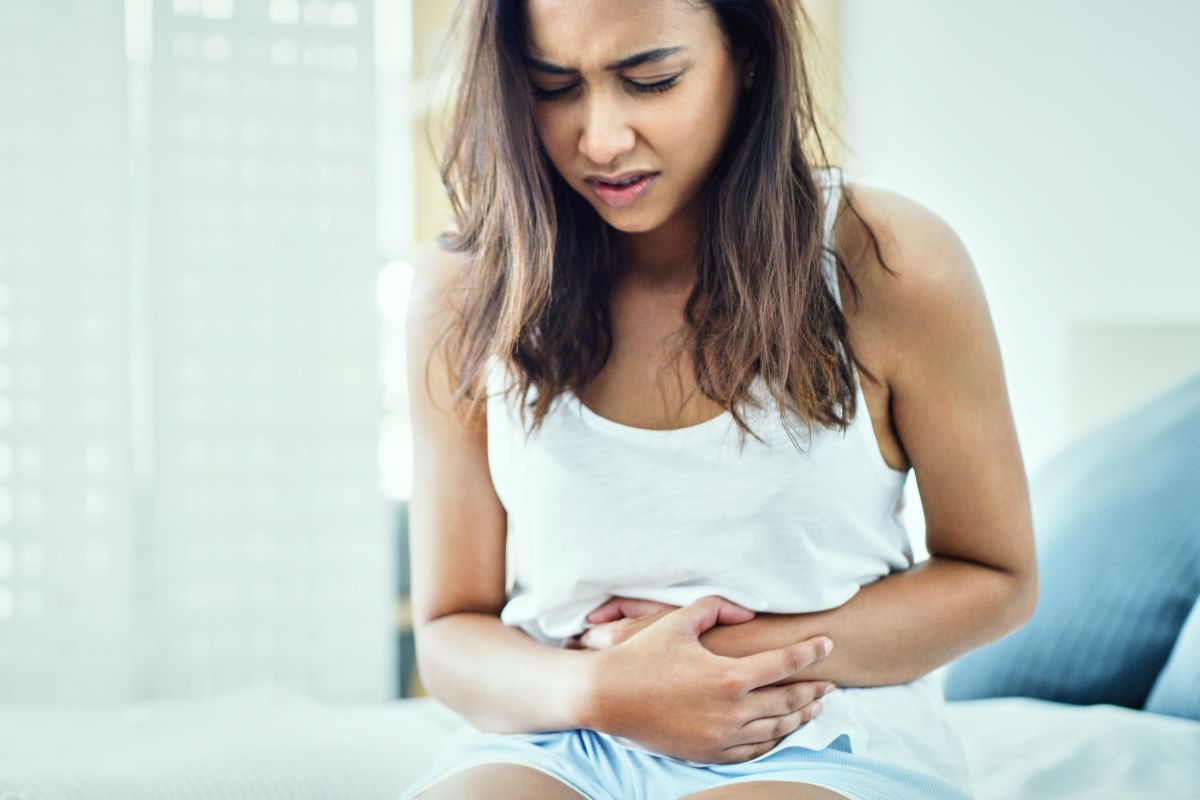Specialist Advice — 14 minutes
Endometriosis and sex make poor bedfellows

Sex is usually a source of pleasure. But when the moment becomes unpleasant because of pain, it’s a sign that something is wrong. For women, pain experienced during penetration can be a symptom of endometriosis, a little-known disease that affects 10% of females of childbearing age.

What is endometriosis?
The endometrium is a layer of tissue that covers the inside of the uterus and thickens each month in anticipation of conception. If there is no pregnancy, the lining breaks down and is shed during menstruation.
In people with endometriosis, endometrial cells are found outside the uterus, either on the ovaries, tubes or ligaments that support the uterus, or on nearby organs such as the bladder and bowels.
These tissue fragments form lesions or nodules that follow the menstrual cycle. They grow and bleed during menstruation, and because the blood cannot escape, this creates inflammation and adhesions that link the organs together over time.
Is it painful?
Yes, pain is the most common symptom of endometriosis. It can be persistent or appear before or during menstruation and sexual intercourse, or during urination or a bowel movement. Gastrointestinal problems, such as diarrhea, constipation, nausea and chronic fatigue, may accompany it. Endometriosis is also often associated with infertility.
When sex hurts
During sexual intercourse endometriosis can cause severe pain, also known as dyspareunia. This symptom affects 56% of women with the condition.[1]
Two types of dyspareunia are associated with endometriosis:
- Superficial dyspareunia: Pain occurs at the entrance to the vagina.
- Deep dyspareunia: Pain is concentrated at the back of the vagina and is directly related to adhesions and areas where endometriosis is present. This type of pain is the most frequent and severe.
Dyspareunia has major consequences for the physical intimacy of women affected by it:
- Before intercourse: Pain-related anxiety can lead to a decrease in desire, as well as reduced arousal and lubrication.
- During intercourse: Due to the fear of pain, involuntary contraction of the perineal muscles reduces the possibility of experiencing pleasure or achieving orgasm, and increases discomfort and pain. During penetration, the penis may also impact the areas affected by endometriosis.
- After intercourse: Spasms caused by an orgasm can pull on adhesions and cause pain.
Loss of libido: another problem
Pain isn’t the only obstacle to a fulfilling sex life. Chronic fatigue, a symptom of endometriosis, can also disrupt it by reducing or eliminating desire. The same is true for some treatments aimed at relieving endometriosis. For example, hormonal treatments such as birth control pills can cause a decrease in libido or vaginal dryness.
For this reason, many women with endometriosis tend to modify their sexual activity or simply stop having sex. This can lead to anxiety or tension within the relationship, and sometimes to depression. Shame, guilt and low self-esteem are common feelings that can lead to social isolation.
Navigating the unknown
It is estimated that nearly 10% of women worldwide have endometriosis, regardless of their ethnic background or social situation.[2] But this number could be much higher, due to the condition often being unknown to patients and even doctors.
The problem is that when it occurs during puberty, endometriosis is often mistaken for menstrual cramps. Teenagers are told that “it’s normal to be in pain” and go on to develop lesions and adhesions until the pain becomes very intense.
But even then, the diagnosis is not obvious. Many of the symptoms resemble those of other disorders, and the ways the condition manifests itself are different from one woman to the next, depending on the location and size of the lesions.
Therefore, it could take more than five years from a report of pain to an actual diagnosis,[3] which must be confirmed by laparoscopy (visualization of internal organs using a thin tube equipped with a camera).
Varied treatments for a complex condition
Women who are diagnosed with endometriosis may be offered different treatments depending on their age, the stage of the disorder and the symptoms they experience, or their desire to have a child. Here are the main ones:
Medication
Medication, including non-steroidal anti-inflammatory drugs, is used to alleviate pain and improve the quality of the person’s sex life.
Hormones
Contraceptives are used to modify the hormonal environment that promotes endometriosis. However, they can have side effects that decrease sexual response (i.e. desire, arousal, lubrication and libido).
Surgery
Surgery can remove or destroy lesions and adhesions, but they are likely to return. As a last resort, the uterus alone or the uterus and ovaries can be removed. However, this procedure can trigger symptoms of menopause and alter certain sexual sensations.
Living with endometriosis
Treatments to reduce pain are not always sufficient to restore a full sex life. A sex therapist can help find ways to reinvent the person’s sexual relationship, without reducing everything to penetration. Obviously, the partner’s participation in this process is important.
In addition, organizations such as Endométriose Québec and The Endometriosis Network Canada offer resources for living with endometriosis. Participating in a support group and sharing experiences with other women often help the person overcome isolation and regain self-confidence.
For professional support, we’re here.
We provide services that can help your doctor detect endometriosis and determine the appropriate treatment.
Do you have a medical prescription for one of these tests? Make an appointment online or call Biron Health Group’s customer service at 1-833-590-2712.
Sources3
- DE GRAFF, A.A., T.M. D’HOOGHE, G.A.J. DUNSELMAN et al. “The significant effect of endometriosis on physical, mental and social wellbeing: results from an international cross-sectional survey,” Human Reproduction, vol. 28, no. 10, pp. 2677-2685, October 2013, https://academic.oup.com/humrep/article/28/10/2677/619939.
- “Endometriosis,” World Health Organization, March 31, 2021, https://www.who.int/news-room/fact-sheets/detail/endometriosis.
- SINGH, S. et al. “Prevalence, Symptomatic Burden, and Diagnosis of Endometriosis in Canada: Cross-Sectional Survey of 30 000 Women,” Journal of Obstetrics and Gynaecology Canada, vol. 42, no. 7, pp. 829-838, July 1, 2020, https://www.jogc.com/article/S1701-2163(19)30980-6/fulltext.






